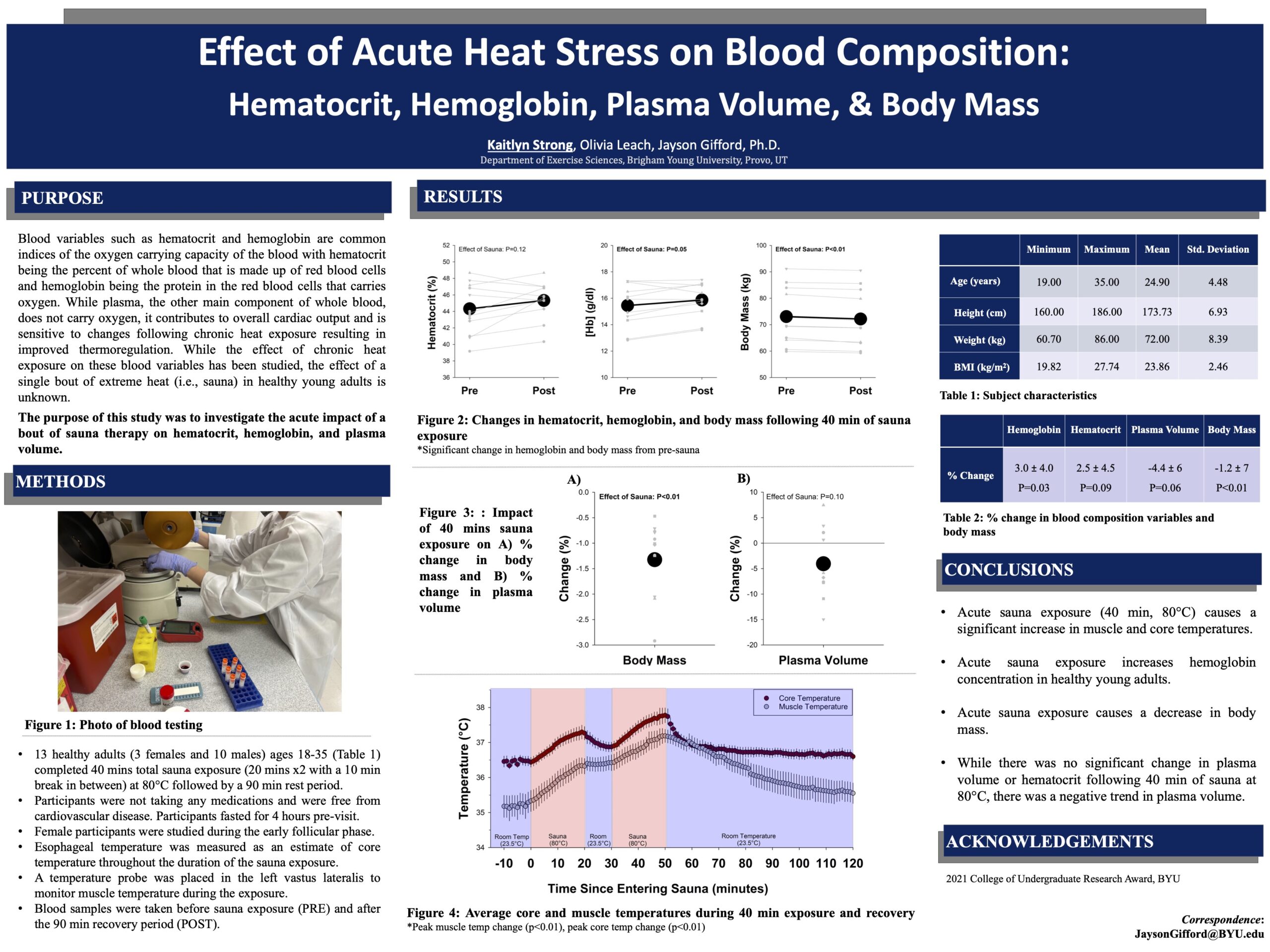Presenter Name: Kate Strong
Description
Blood variables such as hematocrit and hemoglobin are common indices of the oxygen carrying capacity of the blood with hematocrit being the percent of whole blood that is made up of red blood cells, and hemoglobin being the protein in the red blood cells that carries oxygen. While plasma, the other main component of whole blood, does not carry oxygen, it contributes to overall cardiac output and is sensitive to changes following chronic heat exposure resulting in improved thermoregulation. While the effect of chronic heat exposure on these blood variables has been studied, the effect of a single bout of extreme heat (i.e., sauna) in healthy young adults is unknown. PURPOSE: The purpose of this study was to investigate the impact of a bout of sauna therapy on hemoglobin, hematocrit, and plasma volume. METHODS: Thirteen healthy young adults (ages 18-36; n=10 male, n=3 female) underwent a total of 40 min of sauna exposure in two 20 min increments. A baseline blood draw was performed pre-sauna. Participants underwent sauna exposure, and blood draws were performed directly post 40 mins of sauna, as well as after a 90-minute recovery period. Hemoglobin and hematocrit levels were measured, and total plasma volume was calculated using the Dill and Costill equation. Esophageal, muscle, and skin temperatures were recorded throughout the experiment. RESULTS: There was a significant increase in hemoglobin levels (p = 0.05) pre vs. post sauna. There was no significant difference in hematocrit or plasma volume (p = 0.12, p = 0.10, respectively). Though not statistically significant at this time, the plasma volume tended to decrease. There was also a significant increase in esophageal, muscle, and skin temperatures (p<0.001). CONCLUSION: Though acute sauna exposure does not cause a significant difference in hematocrit, there was a significant increase hemoglobin concentration, as well as in esophageal, muscle, and skin temperatures pre vs. post sauna. There are no other impacts on blood variables other than a trend for plasma volume decreasing.
University / Institution: Brigham Young University
Type: Poster
Format: In Person
Presentation #C21
SESSION C (1:45-3:15PM)
Area of Research: Science & Technology
Email: katestrong93@gmail.com
Faculty Mentor: Jayson Gifford

